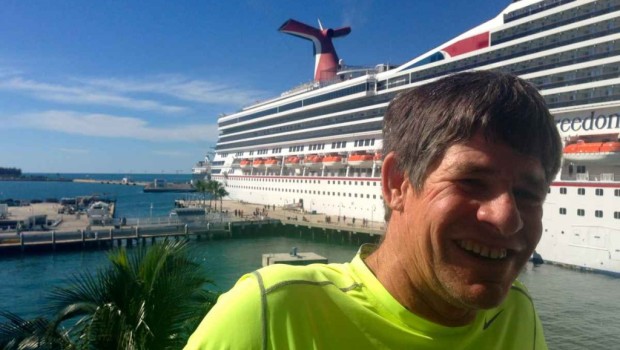McKee’s Key West Minute
Published on January 26th, 2015
Not only can 2-time Olympic medalist Jonathan McKee crush on the race course, but he can also explain to the mortal majority how he does it. Competing last week at Quantum Key West on the J/125 Hamachi, Jonathan provides here a few nuggets…
Heel
Instead of trying to focus only on target speed, we started to keep a consistent heel angle of about 20 degrees. This is a little flatter than we had been sailing. Although the speed did vary a bit more, we had a more consistent track trough the water and better height, so I think the foils were working better. I think this is a lesson that applies to almost any boat. Try to find the right heel (which may be flatter than you think) and then steer and trim the sails to achieve the right average speed, if not the perfect speed at every moment. Accept a little more variation in speed in return for a more efficient foil.
Weeds
Step #1 is realizing that you have them. After determining that you are weeded, what do you do? Sometimes they come off on their own, especially tacking, jibing or rounding marks. But sometimes not, so your next option is to back down. This is nearly always successful, but it will cost you maybe 10 boat lengths. Is it worth it? If you are close to the finish, maybe not. But if you are 0.3 knots slow all the time, you are losing 10 lengths every 10 minutes or so. Painful as it is, it is probably worth doing.
There is another technique called “flossing”, where you throw a rope over the bow and work it back both sides of the boat and down the keel. This works well with a swept keel, but is less successful with a vertical keel or a T keel, because the flossing line does not get all the way to the bottom of the keel. The third option is using a weed stick, which is typically a batten with a piece of rope attached to the end. With smaller boats this can sometimes be used to solve the problem, especially on the rudder. Sometimes you have to slow down, otherwise the force of the water is too much.
In any case, what I learned today is not to ignore the issue, or you bleed slowly to death. As with anything in sailing, all of the above will work better if you have practiced it before!
Managing expectations
In our class, there were a few boats that were clearly more optimized for IRC than our J/125. So even if we sailed perfectly (which we did not), we were probably not going to beat a well-sailed boat that has a more favorable handicap. This is not a complaint against IRC, which is reasonable rating rule, but a recognition that every rating system will have winners and losers. We chose to race in IRC rather than PHRF because the fleet is more competitive, and we felt we would learn more.
So are we disappointed to get 5th? Sure, we left some points on the table, and made plenty of mistakes. But we also sailed some pretty good races, and we learned how to sail our boat better in a range of conditions. We all had a great time, including our owner Greg, and we ended up being more dialed into our boat, both speed-wise and boathandling. We all got along well, enjoyed the sailing and the shoreside activities, and right now everyone on our crew has a smile on their face. So I think we won.
Jonathon’s complete Key West blog at Sailing World: CLICK HERE









 We’ll keep your information safe.
We’ll keep your information safe.